The majority of headlines may focus on the exploits of drivers in the World Rally Championship, but the challenges facing their co-drivers are no less demanding. Traxion.GG is part of the Motorsport Games group, in turn, is related to Motorsport Network. This article was originally published on Motorsport.com, who got in the passenger seat with Toyota Gazoo Racing to find out just what it takes to succeed.
“It’s not something you can just jump in and do, which I think you will find out shortly.” Those are the words relayed by Toyota World Rally Championship co-driver Aaron Johnston as Motorsport.com dons a racesuit, grabs a pace note book and prepares to jump into his seat to attempt one of motorsport’s toughest jobs: being a WRC co-driver.
This is made abundantly clear six minutes and several dubious pace note calls later as a stunned journalist clambers out of Takamoto Katsuta’s Toyota GR Yaris Rally1, following an eye-opening blast through one of Finland’s famously fast forest gravel roads. Calling pace notes in a top-level WRC car is without question a skill that few in this world possess, and an art form that takes years of dedication to perfect.
Ardent rally fan or not, co-driving will have caught your attention, be it watching WRC onboards on television and the internet, or a misspent youth guiding a virtual rally car upon instructions of Nicky Grist through the Colin McRae Rally computer game series. In a nutshell, the principal job of a rally co-driver is to deliver detailed information about the road ahead to allow the driver to pass through at the fastest possible speed. But it’s much more complex than that, as Motorsport.com finds out when it joins the Toyota Gazoo Racing WRC team.
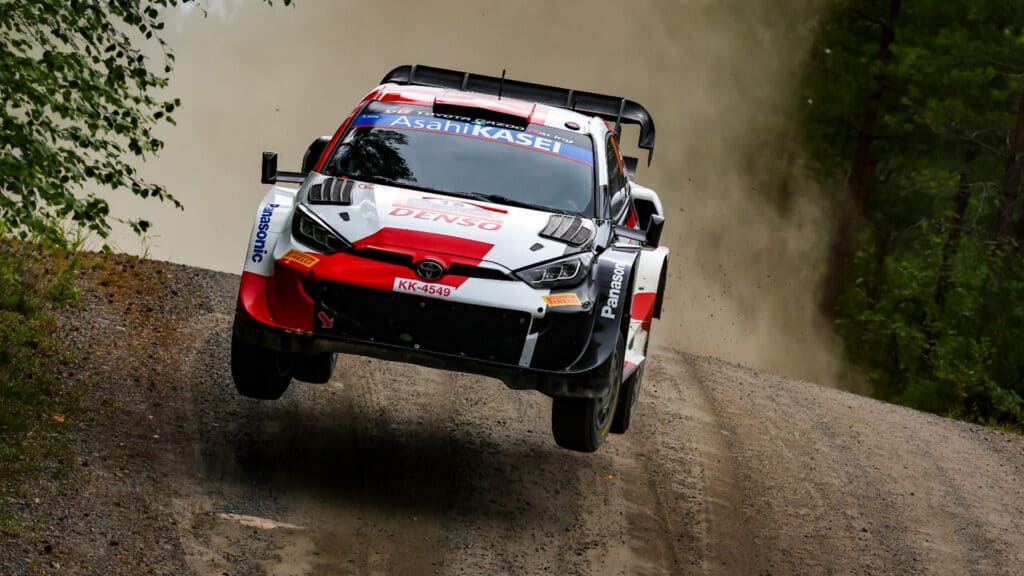
To stand the slimmest of chances of being able to call pace notes correctly for two-time WRC podium finisher Katsuta, Motorsport.com’s crash course – no pun intended – begins on Safari Rally Kenya in June. With a blank pace note book presented in the service park by former factory WRC driver Juho Hanninen, the learning begins. Hanninen is perhaps one of the best to convey the art of co-driving since the Finn has unusually experienced not only driving to pace notes at the highest level but also calling pace notes for current Toyota boss Jari-Matti Latvala when the pair compete in historic rallies.
To be a successful co-driver requires a multitude of skills. Developing a trust and relationship with the driver is just as important as the making and the delivery of the pace notes. Ultimately, the driver relies on the information to steer quickly and safely through arguably the toughest and most dangerous stages the world has to offer.
“For sure as a driver you have to fully trust the notes,” points out Hanninen. “You would have to back off so much if the driver is driving using only his eyes. The timing is also very important. Some drivers like to have the notes called closer to when the corners arrive, some like it a bit further away from the corner. The co-driver also takes care of the timing, so that needs to be managed as cars have to arrive at certain points on time, and this goes on while tyres maybe need changing on road sections or repairs made. It is really hectic.”
Information absorbed, yet overwhelmed by the skills required, the overriding piece of advice is “listen to Taka’s pace notes and learn how to shorten the words”. Hanninen adds: “I would recommend to follow the notes with your thumb because you don’t have so much time to look up. Sometimes with Jari-Matti I would look up and think it is going well, but then I would look down and I didn’t have any idea where we were.”
Watching onboards of Katsuta and Johnston from this year’s WRC stages fills evenings as homework, to try to understand how the pair work together, and the style of pace notes that will be required for a co-driving debut alongside Katsuta in Finland.
“It takes a lot of time to get everything perfected before a rally. It’s not a sport for getting up and having a leisurely breakfast and a nice early dinner. They are long days with little sleep, but we love what we do” Aaron Johnston
Pacenotes can come in various forms dependent on driver preference. While Katsuta’s native tongue is Japanese, he takes his pace notes in English. He and Johnston, who are enjoying their first full WRC season together, operate what is known as a 1-9 system to describe the road ahead. ‘Nine’ represents the fastest or least sharp corners, while ‘one’ is almost a 90-degree turn. Each number is followed by a left or right call alongside extra descriptive words and distances to the corners.
To underline how the co-driving language can differ, Katsuta’s Toyota teammates Kalle Rovanpera and Elfyn Evans run different systems. Championship leader Rovanpera prefers more descriptive notes rather than numbers, while Evans uses the 1-9 system in the opposite direction.
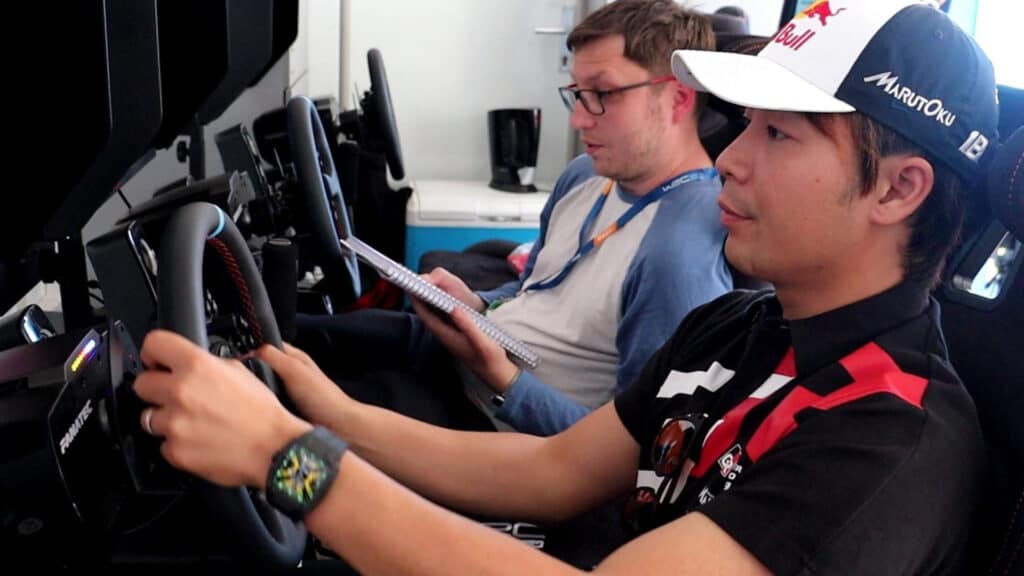
After watching several onboards while attempting to scribble down a version of Johnston’s notes, it’s time for the first test: co-driving in the virtual world. To achieve this, Nacon, the maker of the popular WRC official computer game, provides a special advance copy of the new-for-2022 WRC Generations title, which will hit the shelves in November.
But before any virtual training can take place, Katsuta and Johnston complete the vital recce runs of Rally Finland’s breathtakingly fast, jump-ladened roads for real. On the recce, the WRC crews tackle the stages in a road car at road speed, and it’s these two passes where the driver and co-driver make their pace notes for the rally.
“We spend two days, sometimes three, doing recce on the roads before the rally starts,” explains Irishman Johnston, who began co-driving alongside his father at the age of 12 in local road rallies. “The driver will then dictate how he sees the road and how he wants it described for when we do it for real in the rally. It’s my job to write everything down as he reads it out, and then on the second pass of recce I will read it out and then he’ll make any changes to it if necessary. We will also record this so we can go over it in the hotel in the evening to double-check everything that we did during the day.
“Take Finland for example. We have recce on Tuesday at 5.15am and we will arrive back at the hotel at 5.30pm, and then we’ll do minimum four hours that evening before going to sleep. It takes a lot of time to get everything perfected before a rally. It’s not a sport for getting up and having a leisurely breakfast and a nice early dinner. They are long days with little sleep, but we love what we do.”
Equipped with my own notes made for the virtual version of Finland’s curtain-raiser Harju stage, a first experience of co-driving alongside Katsuta begins in a simulator. Suffice to say Katsuta completes the stage without issue as a virtual version of the GR Yaris Rally1 hurtles through the blend of Tarmac streets and gravel parkland roads, with added simulated hybrid boosts. Somehow I manage to call the notes in the correct order. Objective one completed. But even in the safe surroundings of a video game, the challenge of knowing your place in the notes and calling at the right time is extremely difficult.
“This game is good to use as it’s similar [to the real thing],” says Katsuta after the run, followed by a confidence-boosting assessment of Motorsport.com’s job on the pace notes. “You are listening and then doing [as you would in the real WRC car]. Good job, actually you did very well.” In a weird quirk of fate, Katsuta would go on to win the stage for real during Rally Finland.
The crisp computer simulation is swiftly replaced by the harsh real-world tree-lined gravel roads as we join Katsuta and Johnston on their Rally Finland pre-event test. WRC testing is quite a surreal experience in itself. Toyota has been granted permission to commandeer a residential property deep in a forest and more importantly the use of its road, closed off to the public, with the necessary safety marshals installed along the route.
In a matter of moments the front garden of this house is transformed into a makeshift service park, and a homeowner’s garage, littered with the usual domestic tools, becomes home to a €1million hybrid Rally1 car.
Katsuta and Johnston complete a handful of runs down this rollercoaster of crests, jumps and sweeping turns, a road new to the pair that morning, to gather valuable set-up data required for the upcoming rally.
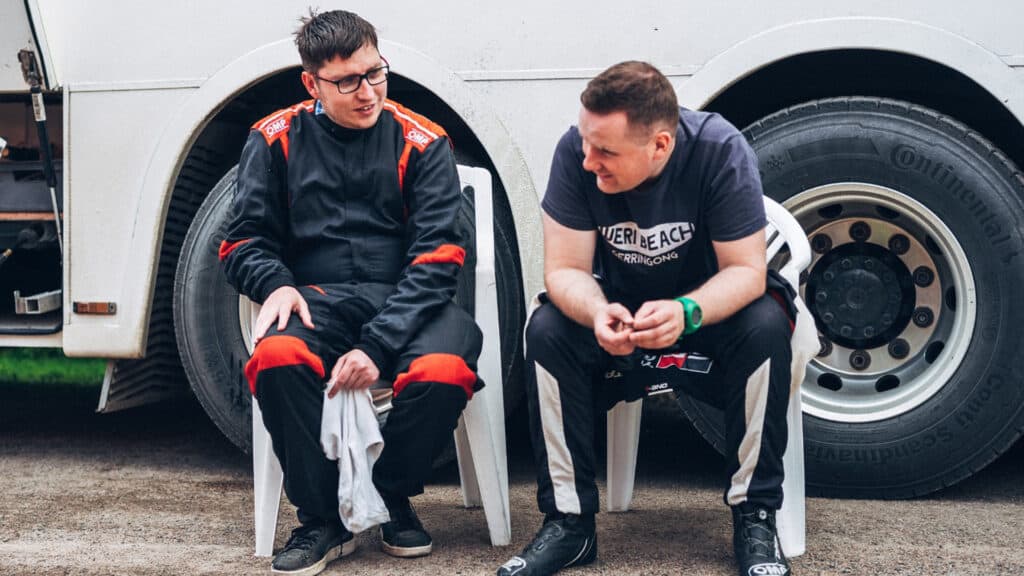
In the breaks between runs, Johnston takes time out to coach a nervous co-driving rookie. The next task is to now decipher his freshly made notes and write my own based on his input. The unique skill required to do this job professionally hits as detailed road descriptions are fired at Motorsport.com to copy down. The first mistake is the size of handwriting, which Johnston advises should be much larger to ease calling at speed – it’s what can only be described as shorthand on steroids.
The level of detail in describing the sections of road and the speed of delivery is alarming. The use of unknown Finnish words such as ‘sumpo’ (‘super-narrow’ in English) is added to a short ‘seven left’ call, increasing the nerves. Phrases such as ‘touch’ and ‘don’t’ feature heavily, respectively meaning a small cut to a corner and a warning not to be greedy on the apex.
The assault on the senses is too much, and halfway through the first page of notes I’ve managed to get ahead of myself and then get lost as the GR Yaris launches over jumps, bounces in compressions, and slides through turns
Pacenotes written, it’s time to find out what it’s like to be a WRC co-driver. Johnston sets a target of calling eight corners correctly – he’s earlier highlighted that this would be a valiant effort after stating that “to start in a top car would be virtually impossible”.
He is, of course, spot-on. Katsuta does his best to reassure and instill panic in equal measure. “As long as you know right and left we should be OK,” he jokes. “I will just follow your pace notes, so there is big pressure now! Don’t be so nervous, just enjoy the ride. If it’s too much information just say the number and ‘right’ or ‘left’.”
There’s not much in life that can prepare anyone for the forces that go through the body when a WRC car launches off the line. After a quick countdown from Katsuta, we’re shot out of a cannon and you fully appreciate this new breed of 500bhp hybrid monsters.
A narrow gravel road seems even narrower, and trees fly past in an instant. Luckily the brain engages and pace notes are being called, albeit in a scared, breathless but also shouty fashion, as the nerves result in forgetting the fact you’re plugged into an intercom system for communication. The assault on the senses is too much, and halfway through the first page of notes I’ve managed to get ahead of myself and then get lost as the GR Yaris launches over jumps, bounces in compressions, and slides through turns.
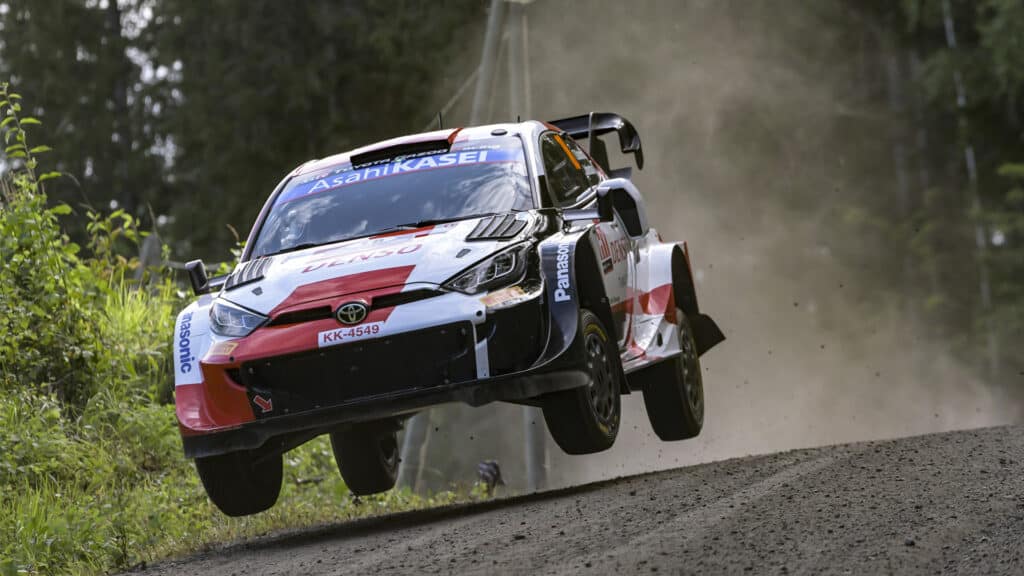
Motorsport.com is dumbfounded by the sheer difficulty of calling notes while being thrown around as the world flashes past at what seems like warp speed, and Katsuta spins the car around at the end of the road for a second blast back to the makeshift service park. The second pass results in a vast improvement – roughly two kilometres of calls are completed before a struggle to turn the page of the pace note book, while going over a jump, is enough to lose our place in the notes. Luckily, Katsuta is a world-class driver with an impressive memory that allows him to breathtakingly slide this GR Yaris through corners back to base at ease, all while talking through the process.
So what does Katsuta think of the efforts of this debutant co-driver who has clambered out of the car with his hands and legs trembling? “It was good,” he says. “You have never been in this car. I think in the first run you were a fair few corners ahead, but this is very normal as you don’t know how it’s going and it’s very difficult to guess where you are. But on the second run you impressed me, you did very well. If you have a few more runs you will get the feeling and you will be even better.”
The amiable Katsuta is, of course, being overly kind. But rest assured, the world of co-driving is not for the faint-hearted. The men and women who take up the profession deserve the utmost respect for tackling what has to be one of the most demanding and skillful roles in motorsport. They deserve far more credit for their vital contribution to the sport.
Think you could be a real-world WRC co-driver? Think again… Watch the video at the top of this article to witness Tom’s visceral experience.
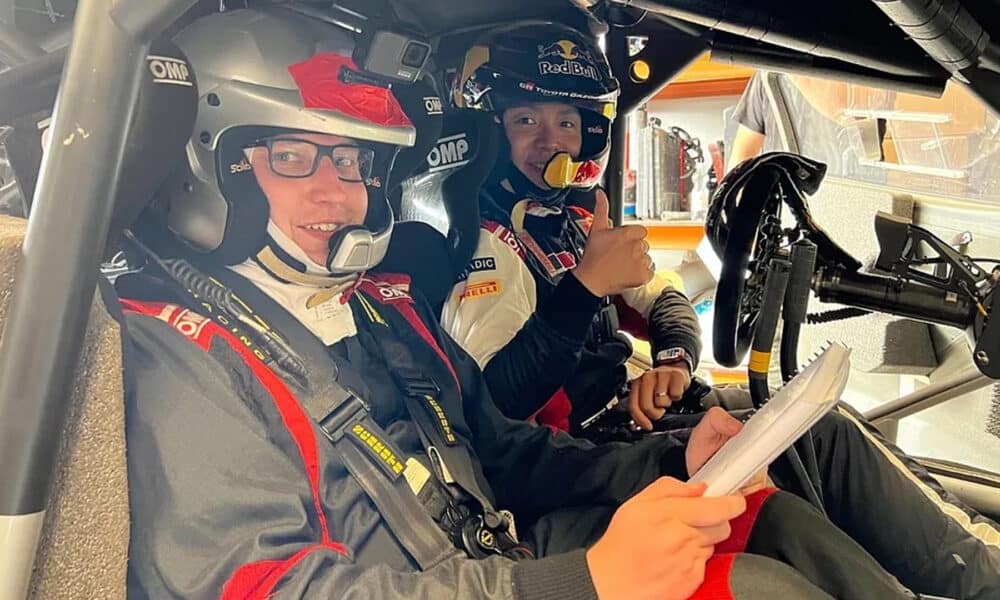





Chat with the Community
Sign Up To CommentIt's completely Free